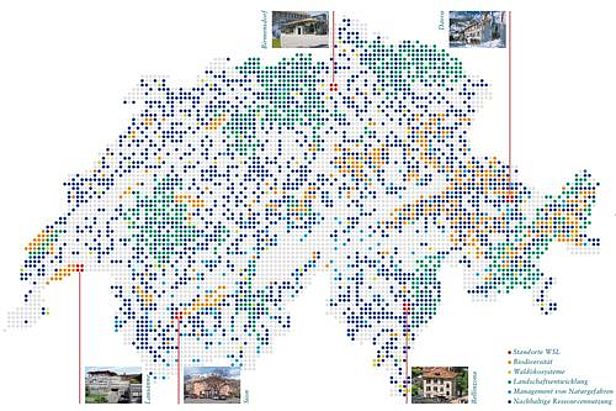
Forest development and monitoring ¶
Gradual changes in the forest can be detected only by means of long-term environmental observations. Some of the WSL's data series go back more than 100 years.
Contents ¶
A core business of WSL ¶
Forest observation has been one of our core businesses since the founding of the WSL's predecessor institution in 1885. In those days, the links between the overexploitation of the forests and the devastating floods of that time were investigated. In 1888, the first experimental plots on timber yield followed; this research continues to this day under the term experimental forest management.
In 1983, the National Forest Inventory NFI was added in order to track forest development in Switzerland not only economically but also ecologically. It continuously monitors forest and wood resources as well as the quality of forests for their protection function, as recreational areas and for biodiversity on around 6500 sample plots. We also observe natural forest development in natural forest reserves.
The «forest dieback» debate ¶
In the 1980s, unexplained forest damage called for detailed monitoring of forest condition and air pollution. WSL has since been conducting the Sanasilva programme on tree condition and the Long-term Forest Ecosystem Research programme LWF, which investigates the effects of pollutants and other environmental factors on forests throughout Switzerland. Today, these data are invaluable for researching the impact of climate change on forests.
We expand our monitoring projects as new social questions arise, for example how the population uses the forest. Or when new technologies make new research questions possible. TreeNet , for example, continuously monitors the water supply of over 200 trees throughout Switzerland and thus serves as an early warning system for water shortages.
Our measurement series are a valuable basis for numerous research questions. Institutions around the world can access them thanks to our ENVIDAT data portal. The findings flow into politics, the economy and nature conservation practice; they help to monitor the success of measures in environmental and natural hazard protection and in dealing with environmental change.
